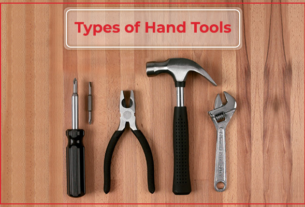Are you tired of using subpar tools that just don’t cut it? Look no further than Hock Tools. With their high-quality blades and attention to detail, Hock Tools are the go-to choice for woodworkers and DIY enthusiasts alike. In this comprehensive guide, we’ll explore everything you need to know about Hock Tools, from choosing the right tool for your project to maintaining it for years to come.
Why Choose Hock Tools?
Before we dive into the nitty-gritty of choosing and using Hock Tools, let’s take a closer look at why they’re worth considering in the first place. Here are just a few reasons why so many people swear by these tools:
– High-Quality Materials: Hock Tools uses only the best materials in their blades, including A2 steel and cryogenically treated O1 steel. This results in blades that hold an edge longer and are less prone to chipping or breaking.
– Attention to Detail: From the design of the blade to the shape of the handle, every aspect of a Hock Tool is carefully considered. This attention to detail ensures that each tool feels comfortable in your hand and performs at its best.
– Customizability: If you have specific needs or preferences when it comes to your tools, Hock allows you to customize your order with different blade widths, handle materials, and more.
Choosing the Right Hock Tool
Now that you know what makes Hock Tools stand out from the crowd, let’s talk about how to choose the right one for your needs. Here are some key factors to consider:
Blade Width: The width of the blade will determine how much material you can remove at once. For smaller projects or finer details, a narrower blade is ideal. For larger projects or rougher work, a wider blade will get the job done faster.
Blade Shape: Hock Tools offers a variety of blade shapes, from straight to curved to skew. The shape you choose will depend on the type of project you’re working on and your personal preference.
Handle Material: Hock Tools offers handles made from a variety of materials, including bubinga, curly maple, and ebony. Consider what feels most comfortable in your hand and what will match the aesthetic of your workspace.
Maintaining Your Hock Tool
Once you’ve chosen the perfect Hock Tool for your project, it’s important to take care of it properly. Here are some tips for maintaining your tool:
– Keep it Sharp: A dull blade not only makes your work more difficult but can also be dangerous. Use a sharpening stone or honing guide to keep your blade razor-sharp.
– Clean It Regularly: Sawdust and other debris can build up on your tool over time, leading to rust or other damage. Make sure to clean it thoroughly after each use.
– Store it Properly: To prevent damage to the blade or handle, store your Hock Tool in a dry place away from direct sunlight or extreme temperatures.
Conclusion
Whether you’re a professional woodworker or just like to dabble in DIY projects, Hock Tools are an excellent investment that will last for years to come. By choosing the right tool for your needs and taking proper care of it, you’ll be able to create beautiful pieces with ease. So why settle for subpar tools when you could have the best? Try out Hock Tools today and see the difference for yourself.
References:
– “Hock Blades.” Highland Woodworking. https://www.highlandwoodworking.com/hockblades.aspx
– “Hock Tools.” Lee Valley Tools. https://www.leevalley.com/en-us/shop/tools/hand-tools/chisels-and-gouges/hock-tools
– “How to Sharpen Chisels and Plane Blades.” FineWoodworking. https://www.finewoodworking.com/2015/07/22/how-to-sharpen-chisels-and-plane-blades



